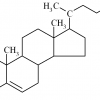Preimplantation genetic diagnosis (PGD) is a technique that allows scientists to screen embryos after fertilization through In Vitro Fertilization (IVF), to prevent the transmission of serious genetic diseases for couples who are at risk. It also can be used to screen the egg and sperm before fertilization occurs. Only unaffected embryos will be transferred to the uterus for implantation.

Image from Nature Reviews Genetics 3, 941-955 (December 2002)
While this technology offers the hope to increase the success of IVF, it does raise some concerns about choosing a child in order to meet the needs and desires of parents. While most cases seem to have parents that are trying to increase their chances of having a viable pregnancy, some have raised some major ethical dilemmas. For example, two parents with achondroplasia, a disorder of bone growth that causes the most common form of dwarfism , is caused by having only one mutated copy of a gene. These parents might want to avoid an embryo that receives a mutated copy from both parents, which would be lethal. Instead, would they possibly choose an embryo that only has one affected copy, which would result in a child with achondroplasia, instead of an unaffected embryo? Would an unaffected child suffer more in an achondroplastic family than an affected child in such an environment?
This technique can be applied in a variety of ways, but I wonder if there are more ethical concerns than anything else. With any new technology, just because we can, should we? Are parents going to do this just to have a child free of genetic disease? Or is the future of “designer babies” closer than we think?
Preimplantation genetic diagnosis (PGD) is a technique that allows scientists to screen embryos after fertilization through In Vitro Fertilization (IVF) to prevent the transmission of serious genetic diseases for couples who are at risk. It also can be used to screen the egg and sperm before fertilization occurs. Only unaffected embryos will be transferred to the uterus for implantation. 
Image from Nature Reviews Genetics 3, 941-955 (December 2002)
/* Style Definitions */
table.MsoNormalTable
{mso-style-name:”Table Normal”;
mso-tstyle-rowband-size:0;
mso-tstyle-colband-size:0;
mso-style-noshow:yes;
mso-style-priority:99;
mso-style-parent:”";
mso-padding-alt:0in 5.4pt 0in 5.4pt;
mso-para-margin-top:0in;
mso-para-margin-right:0in;
mso-para-margin-bottom:10.0pt;
mso-para-margin-left:0in;
line-height:115%;
mso-pagination:widow-orphan;
font-size:11.0pt;
font-family:”Calibri”,”sans-serif”;
mso-ascii-font-family:Calibri;
mso-ascii-theme-font:minor-latin;
mso-hansi-font-family:Calibri;
mso-hansi-theme-font:minor-latin;
mso-bidi-font-family:”Times New Roman”;
mso-bidi-theme-font:minor-bidi;}
Preimplantation genetic diagnosis (PGD) is a technique that allows scientists to screen embryos after fertilization through In Vitro Fertilization (IVF) to prevent the transmission of serious genetic diseases for couples who are at risk. It also can be used to screen the egg and sperm before fertilization occurs. Only unaffected embryos will be transferred to the uterus for implantation.
While this technology offers the hope to increase the success of IVF, it does raise some concerns about choosing a child to order to meet the needs and desires of parents. While most cases seem to have parents that are trying to increase their chances of having a viable pregnancy, some have raised some major ethical dilemmas. For example, two parents with achondroplasia, a disorder of bone growth that causes the most common form of dwarfism , is caused by having only one mutated copy of a gene. These parents might want to avoid an embryo that receives a mutated copy from both parents, which would be lethal. Instead, would they possibly choose an embryo that only has one affected copy, which would result in a child with achondroplasia, instead of an unaffected embryo? Would an unaffected child suffer more in an achondroplastic family than an affected child in such an environment?
This technique can be applied in a variety of ways, but I wonder if there are more ethical concerns than anything else. With any new technology, just because we can, should we? Are parents going to do this just to have a child free of genetic disease? Or is the future of “designer babies” closer than we think?












